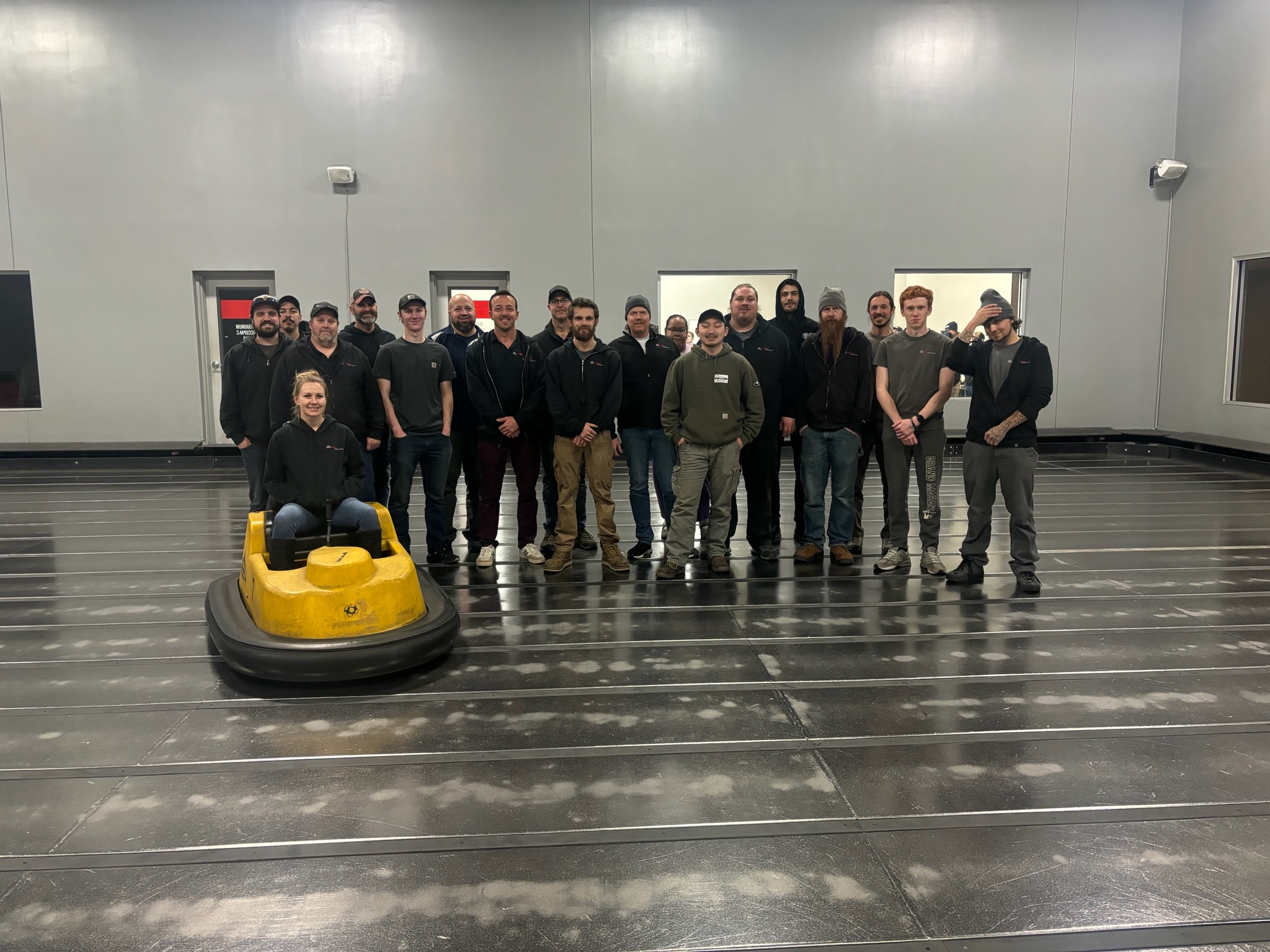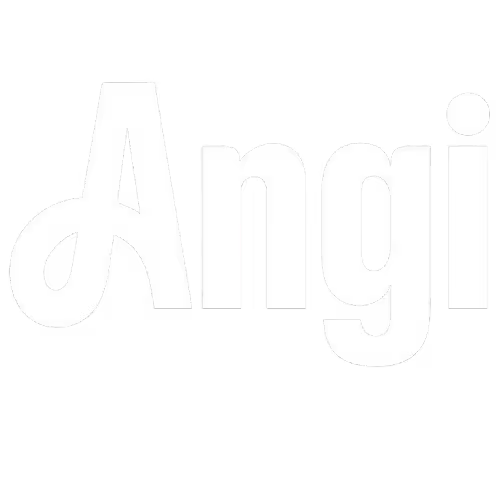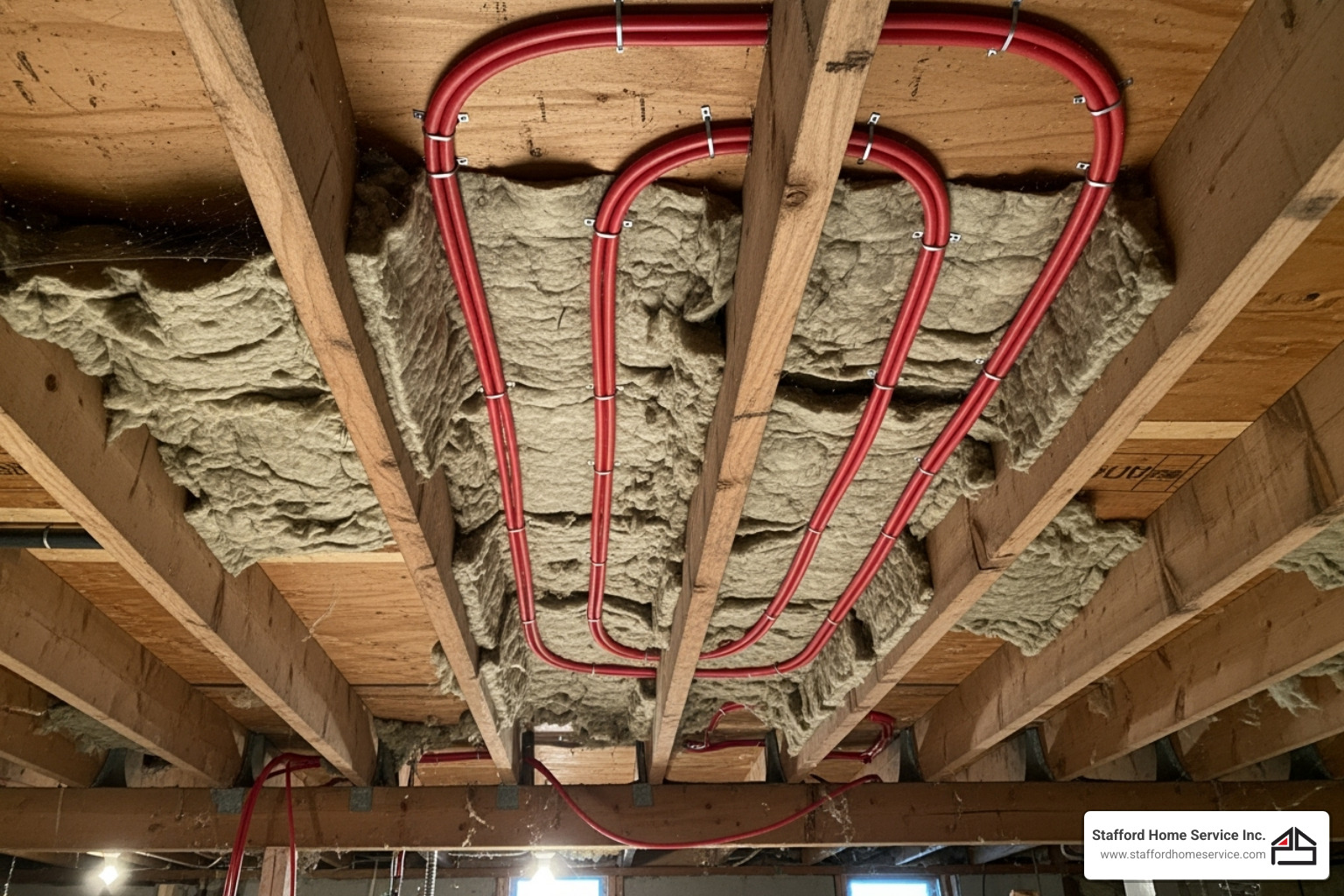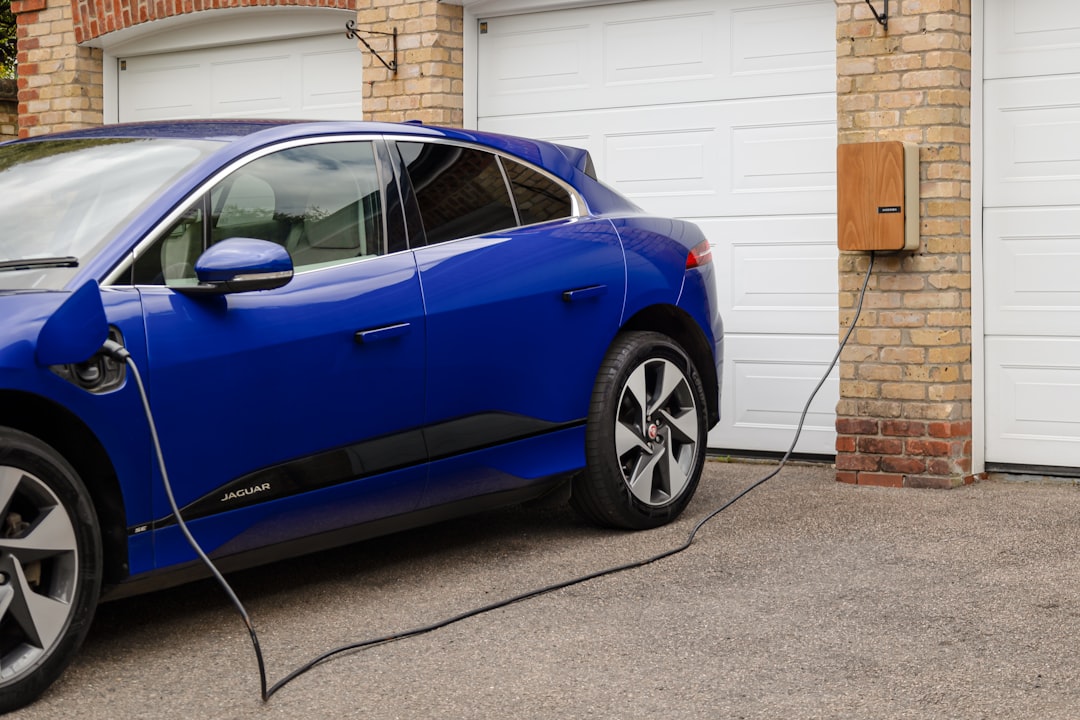Decoding Heat Pump Installation Costs: A Comprehensive Guide
Understanding the Investment in Your Home's Comfort System
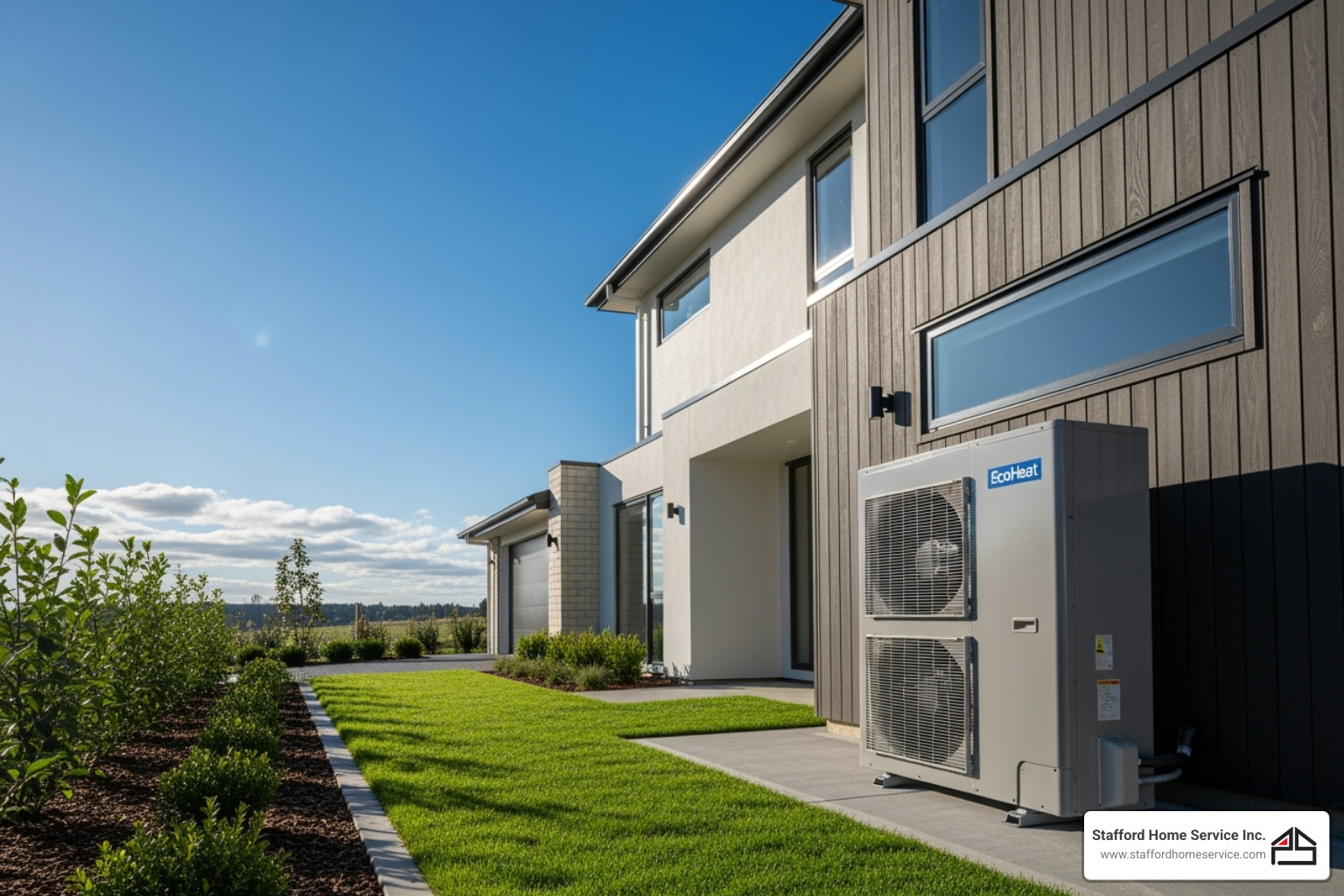
Heat pump installation cost is a primary consideration for homeowners upgrading their comfort system. Whether you're building a new home, replacing an aging system, or seeking better efficiency, understanding what influences the total investment helps you plan confidently.
Quick Answer: What Affects Heat Pump Installation Cost?
- System type: Air-source, geothermal, or ductless mini-split
- Home size: Larger homes need higher-capacity systems
- Efficiency ratings: Higher SEER2 and HSPF2 ratings mean better long-term savings
- Labor and installation complexity: Existing ductwork, electrical upgrades, and permits
- Additional requirements: Thermostat upgrades, duct repairs, or electrical panel work
Heat pumps offer a smart, all-in-one solution for Minnesota homeowners, providing reliable heating, efficient cooling, and lower energy bills. Instead of burning fuel, they transfer heat—pulling warmth from outdoor air in winter and reversing the process for summer cooling. This efficient method means fewer components to maintain and a smaller carbon footprint.
If you're exploring options for heating and cooling services in Mounds View, MN, understanding the factors that shape your total investment is the first step. When you're ready to move forward, contact Stafford Home Service Inc. for a personalized consultation and transparent pricing.
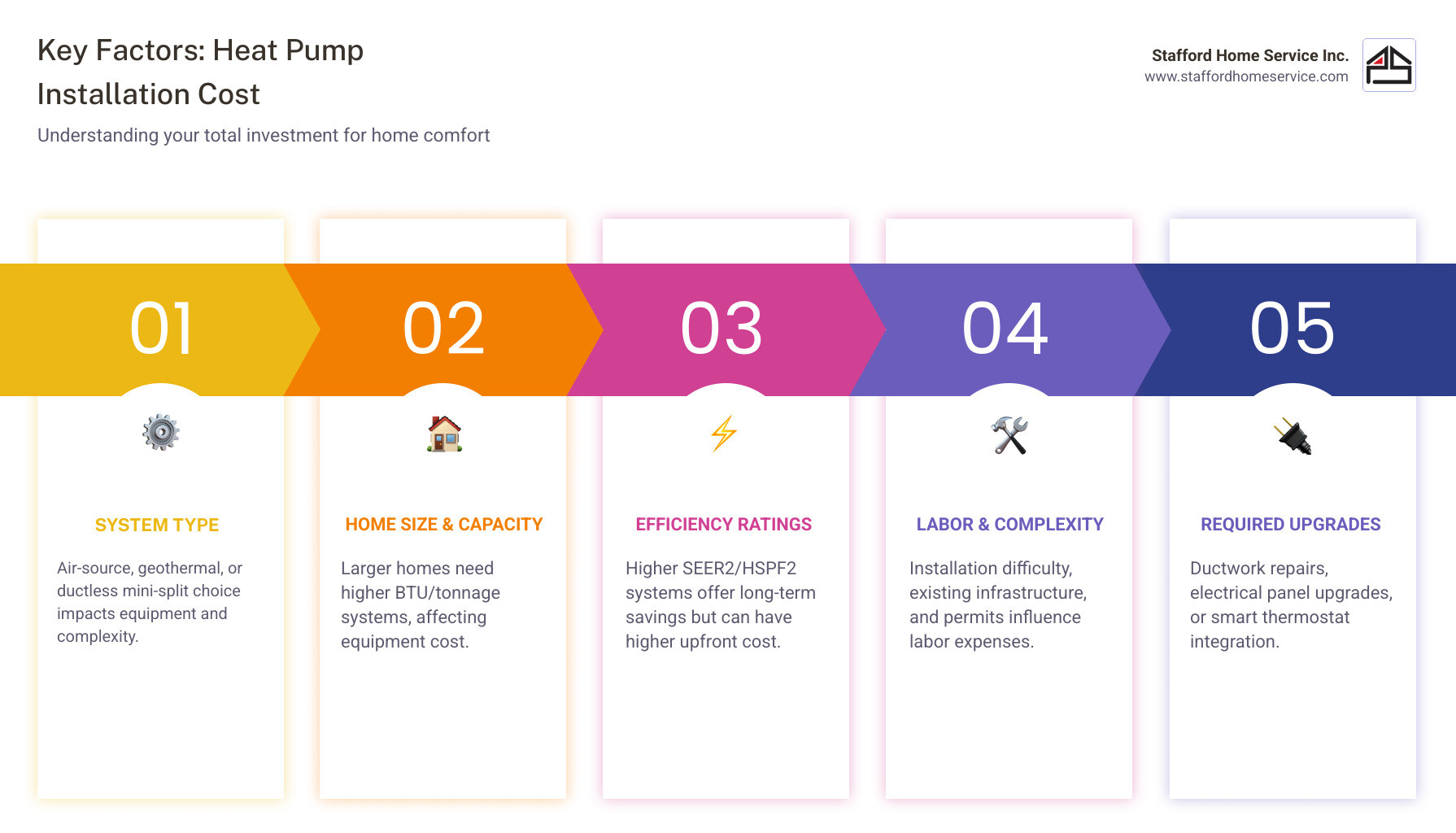
Key Factors That Determine Your Heat Pump Installation Cost
Determining your heat pump installation cost involves several factors. A thorough home assessment is the first step. Our technicians evaluate your home's size, layout, insulation, ductwork, and electrical system to ensure we recommend a system that fits your home perfectly. This detailed evaluation helps us identify potential challenges, like electrical or ductwork needs, early on to prevent surprises.
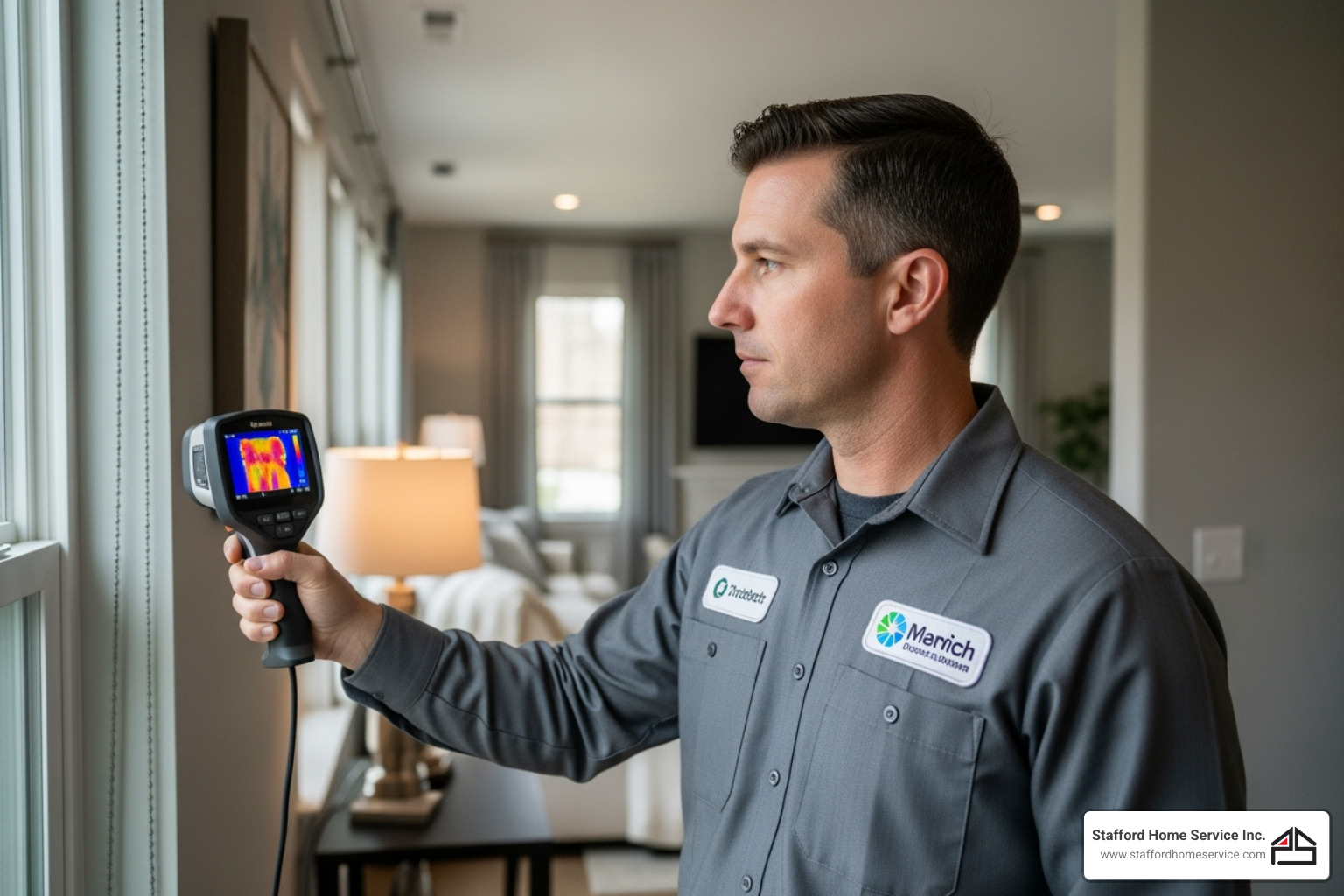
This assessment helps us spot potential challenges before installation day. Maybe your home needs some electrical work, or your ducts could use sealing. Catching these details early means no surprises later. If you're in the Bloomington area and ready to get started, our Heat Pump Installation Bloomington MN team begins every project with this careful evaluation.
Heat Pump Type and Model Selection
The type of heat pump you choose has the biggest impact on your heat pump installation cost. Each system works differently and comes with its own installation requirements.
- Air-source heat pumps are the most popular choice. They transfer heat between your home and the outdoor air, and modern systems work well even in Minnesota's cold climate.
- Geothermal heat pumps use stable underground temperatures for exceptional efficiency. The installation involves burying ground loops, leading to a higher initial investment but substantial long-term energy savings.
- Ductless mini-split systems are ideal for homes without ductwork or for room-specific temperature control. They connect an outdoor unit to one or more indoor units, offering precise comfort.
- Hybrid systems pair a heat pump with a furnace. The system automatically uses the most efficient heating source based on the outdoor temperature, providing efficiency on mild days and powerful furnace heat in extreme cold.
Choosing the right system means balancing your home's needs, your comfort preferences, and your long-term energy goals. Our article on Heat Pumps vs Traditional HVAC Systems can help you understand how these options stack up.
Home Size, Layout, and System Capacity
The right-sized heat pump is crucial and directly affects your heat pump installation cost. We consider square footage, but also layout, ceiling height, and window placement. Insulation quality is also key; well-insulated homes may need a smaller, less expensive system. Proper sizing is vital. An undersized unit will struggle, while an oversized one will cycle inefficiently and waste energy. We use detailed load calculations—not guesswork—to determine your home's exact needs.
Understanding the Labor Component of Your Heat Pump Installation Cost
Professional installation is a significant part of the total investment. It requires specialized skills in electrical work, refrigerant handling, and system integration. Installation complexity varies; a simple replacement is quicker than a project needing duct modifications or electrical upgrades. Most installations are completed in a day, though complex projects take longer. Our experienced technicians apply their deep knowledge of local building codes and manufacturer specifications to every job. Quality workmanship ensures your system runs quietly, heats and cools evenly, and lasts for years, representing an investment in peace of mind.
Efficiency Ratings (SEER2 & HSPF2)
Efficiency ratings indicate how much comfort you get for your electricity spending. While higher-efficiency systems may increase the initial heat pump installation cost, they save you money on monthly bills. SEER2 (Seasonal Energy Efficiency Ratio 2) measures cooling efficiency, and HSPF2 (Heating Seasonal Performance Factor 2) measures heating efficiency—higher numbers are better. ENERGY STAR labeled systems meet strict federal guidelines for energy use. The long-term energy savings from a high-efficiency unit can often offset the higher upfront investment over the system's lifespan. We dive deeper into these benefits in our article on Heat Pumps Energy Efficient Heating.
Exploring Different Heat Pump Systems
Choosing the right heat pump system is crucial, as the heat pump installation cost varies by type. Ducted systems use existing ventilation to condition your entire home, while ductless systems are perfect for homes without ducts or for creating independent temperature zones. Both offer excellent whole-home comfort, and many systems offer zoned comfort—the ability to heat or cool different areas independently for greater energy savings. You can find more advantages in our article on Top 5 Benefits of Heat Pump Systems.

Air-Source and Cold-Climate Heat Pumps
Air-source heat pumps are the most common type, transferring heat between your home and the outside air. While standard models work well in moderate climates, cold-climate technology is a game-changer for Minnesota. These advanced systems can efficiently extract heat from air well below zero. For the coldest days, a hybrid system that pairs a heat pump with a furnace provides a great solution. The heat pump does most of the work, and the furnace provides supplemental heat only when needed, ensuring comfort and efficiency.
If you're in the Golden Valley area and curious whether a cold-climate heat pump makes sense for your home, our team at HVAC Golden Valley MN Heat Pump can walk you through your options.
Geothermal Heat Pumps
Geothermal systems are the most energy-efficient option available. They use underground pipes, or ground loops, to tap into the earth's stable temperature (around 50-55°F). This consistency allows for exceptionally high efficiency and lower operating costs. While the heat pump installation cost is higher due to excavation, it's a long-term investment. The indoor units last over 20 years, and the ground loops can last 50 years or more, making it a cost-effective choice over time for many homeowners.
Ductless Mini-Split Systems
Ductless mini-split heat pumps offer best versatility. They connect an outdoor unit to one or more indoor air handlers, allowing for flexible installation on walls or ceilings. Their greatest advantage is zoned heating and cooling, where each indoor unit operates independently for precise temperature control and energy savings. They are an ideal solution for homes without ductwork, additions, or converted spaces, often making the overall project more manageable than installing a full duct system. We work with quality brands like the Mitsubishi Mini Split Heat Pump, which are known for quiet operation and impressive efficiency.
Associated Project Requirements and Upgrades
A successful installation depends on your home's existing infrastructure. Your total heat pump installation cost may include upgrades to ensure your new system operates safely and efficiently.
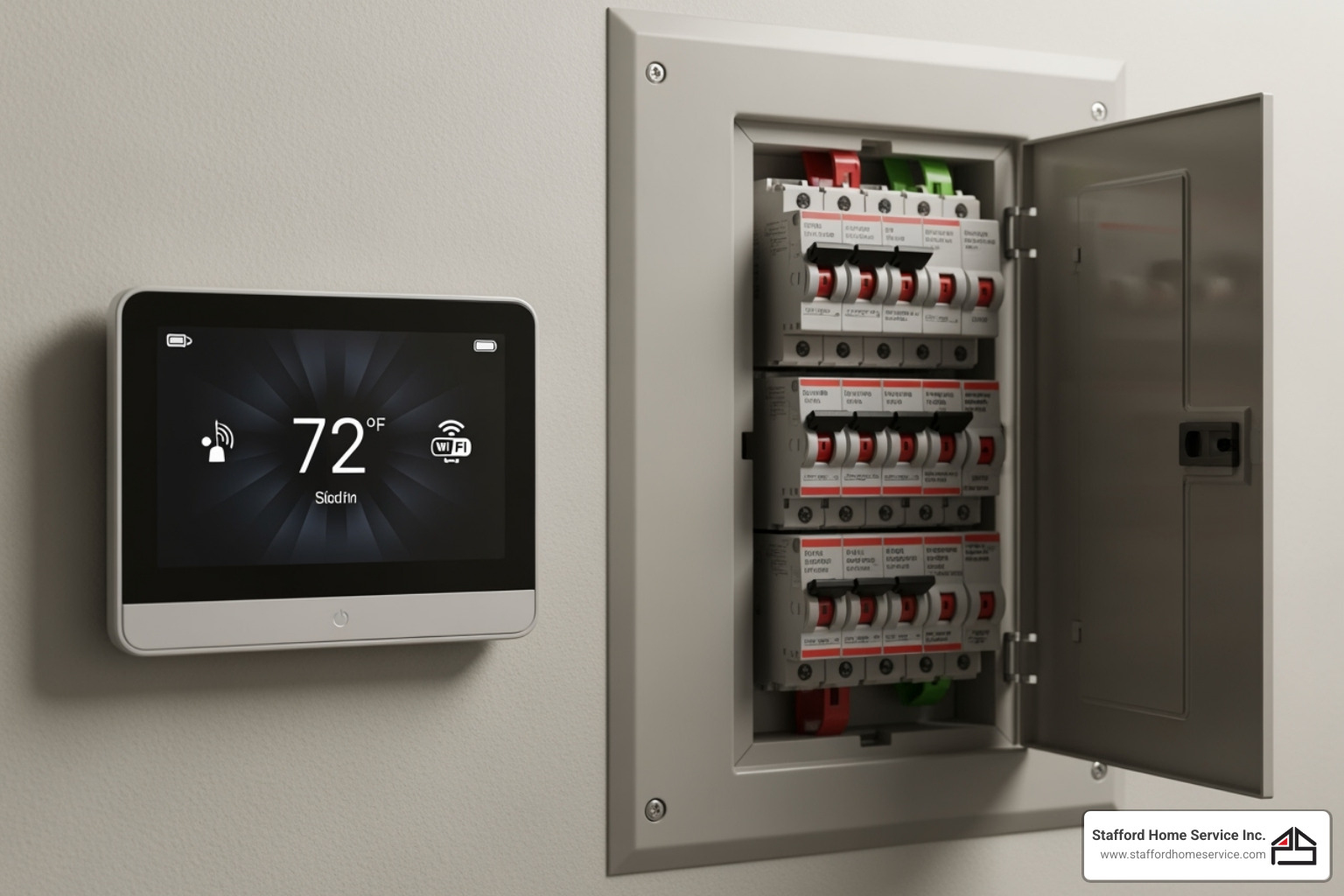
When we evaluate your home, we look at the big picture—how everything works together. Your home's infrastructure needs to support the new system, from your electrical panel to your ductwork. For homeowners in Richfield considering an upgrade, our Heat Pump Replacement Richfield MN services include a thorough assessment of these critical components.
Ductwork Modifications and Repair
For ducted systems, the condition of your ductwork is critical. Our duct inspection identifies leaks, blockages, or improper sizing. Sealing leaks is a cost-effective way to boost efficiency, as it prevents conditioned air from escaping. We also ensure your ducts are properly sized for the new system's capacity to guarantee optimal airflow and even temperatures throughout your home. In some cases, modifications or partial replacement may be necessary. These improvements are essential for maximizing your comfort and energy savings.
Electrical System Upgrades
Heat pumps have specific electrical needs. We evaluate your panel capacity to ensure it can handle the load, especially if electric backup heat is included. Modern systems often require dedicated circuits. If your panel is outdated, an electrical panel upgrade may be necessary for safety and reliability. This work must meet all local safety compliance standards and building codes. An upgraded panel benefits your entire home, providing capacity for today's needs and future improvements.
Permits and Smart Thermostats
Installation permits are required by local authorities to ensure all work meets local building codes for safety. We handle this process for you. We also highly recommend smart thermostat integration. These devices offer programmable schedules and Wi-Fi controls, allowing you to optimize energy use and manage your system remotely. A smart thermostat acts as the brain for your system, learning your preferences to maximize both comfort and efficiency. The investment in a quality smart thermostat typically pays for itself through the energy savings it enables.
Frequently Asked Questions about Heat Pump Investment
How do I know when to replace my old system instead of repairing it?
Deciding whether to repair or replace an old system can be tough. Consider these signs. System age is a key factor; most heat pumps last 10 to 15 years. If your system is in this range, replacement is often wiser than costly repairs. Frequent breakdowns (repair frequency) are another red flag. If you're constantly calling for service, the repair bills add up. Also, watch for declining efficiency, indicated by rising energy bills, or persistent heat pump mode issues. If a repair is very expensive or you're facing multiple issues, investing in a new, efficient heat pump usually makes better financial sense due to improved comfort and lower monthly bills.
What is the typical lifespan of a new heat pump?
A new heat pump is a durable investment. Air-source heat pumps typically last 10 to 15 years, with many modern, well-maintained units lasting longer. Geothermal heat pumps are longevity leaders; the indoor components last 20 to 25 years, while the underground loops can last 50+ years. The maintenance impact is huge. Regular professional tune-ups, as outlined in our Heat Pump Maintenance Schedule, are essential to maximize lifespan and efficiency. Warranty coverage from manufacturers, typically 5 to 10 years on parts, also protects your investment.
Are there incentives to help with the initial heat pump installation cost?
Yes, several programs can help make your new system more affordable. Federal tax credits are often available for high-efficiency ENERGY STAR systems, reducing your overall tax liability. State rebates may also be offered to encourage energy-efficient upgrades. Your local utility company is another great resource, as they often provide rebates to reduce demand on the grid. We also offer financing options for qualified customers, allowing you to spread the heat pump installation cost over manageable monthly payments. We can help you steer available incentives to find a solution that fits your budget.
Conclusion
The heat pump installation cost is more than a price tag; it's an investment in your home's comfort and efficiency. It reflects the right system for your home, the quality of the installation, and the long-term performance that will shape your utility bills for years. The return on this investment comes through significant energy savings, lower operating costs, and a smaller carbon footprint. A modern heat pump provides both heating and cooling in one smart unit and can even increase your property's value.
At Stafford Home Service Inc., we are committed to quality workmanship and complete customer satisfaction. Our experienced owners stand behind our work, and our commitment is backed by the Daikin Comfort Promise, ensuring your investment is protected.
Ready to explore how a heat pump can improve your home's comfort and lower your energy bills? Contact us today for a personalized consultation. We serve homeowners throughout Minneapolis, Bloomington, Richfield, and the surrounding communities. For more on our services, visit our page on heating and cooling services in Mounds View, MN.
Your home's comfort is an investment in your family's daily life. Let's make it count.
Customer Testimonials
Our customers consistently praise our knowledgeable technicians, prompt service, and the lasting quality of the work we deliver.
ABOUT STAFFORD HOME SERVICE
In 2007, long-time team members Kris Thompson and Dan Fournier took ownership of Stafford Home Service. With over 60 years of combined expertise in residential electrical and HVAC, they continue the legacy of former owners Curt Cervin and Paul Stafford—delivering quality workmanship and complete customer satisfaction.
70+ Years
Family-operated experience delivering trusted electrical, heating, and cooling services.
800+
Verified 5-star reviews from satisfied customers.
